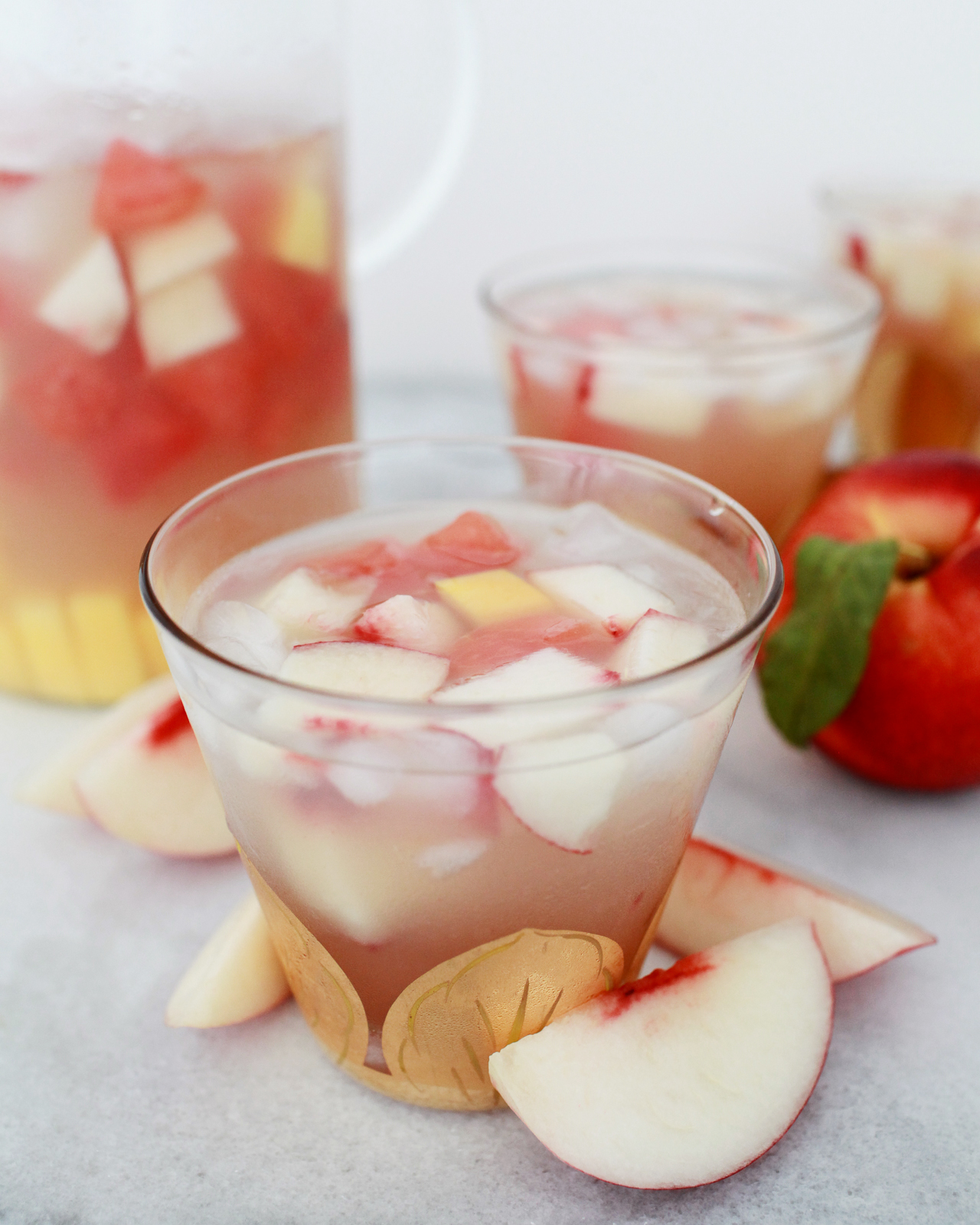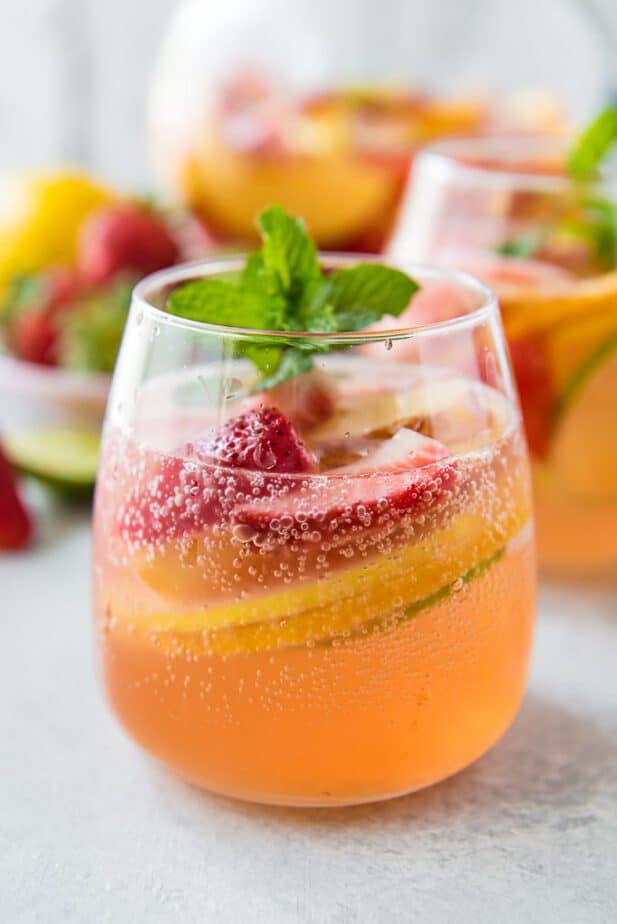
Right now, it’s summer, so we have access to fragrant peaches and strawberries.

Seasonal fruit - Just as I mentioned above, you can adapt your sangria to the season you are in. You can use brown sugar (our favorite), simple syrup, maple syrup, and even honey. Sweetener - I’m a big lover of dry red wine, but even I like a little sweetener in my sangria. I’ve even used a Meyer lemon in place of a regular lemon and loved it! Orange and lemon juice - We love the addition of fresh squeezed orange and lemon juice to sangria. You can also substitute brandy for other liqueur (triple sec and Grand Marnier are a popular choice). Īll that said, you can make sangria without brandy so if you’re just not into getting the extra bottle, skip it, the sangria will still taste great without it. Remy VSOP, which was less than $15 and while I would not sip on it by a fire or anything, we were very happy with the results when we added it to the sangria. Brandy makes sangria taste and smell more aromatic and you don’t need to use the most expensive bottle (not even close).

We don’t really cook with or drink it very often at home so why should you buy a whole bottle for this? Well, here’s what we discovered. You don’t need to break the bank with the wine you choose - I personally choose something between $15 and $20.īrandy - The first thing we wanted to check when testing this sangria recipe was whether or not the brandy is needed. Look for tempranillo, garnacha (also know as grenache) or a label that has Rioja on it (Adam’s favorite, because it usually has a touch more oak). Red wine - For the best red sangria, we recommend a dry red wine, preferably from Spain. Here’s what we use to make a delicious pitcher of sangria: You can even use frozen fruits if that’s all that you have access to. In the summer months, use peaches and berries then in the fall or winter, stick with apples and pears. Sangria IngredientsĪs I mentioned above, sangria is basically a wine punch and like most punch recipes, you should feel comfortable playing around with the ingredients, especially when it comes to the fruit. We love both of those sangria recipes, but thought it was time to share a more traditional Spanish sangria with you. We have two white wine sangrias already on the blog (see our peachy white wine sangria and this extra fruity sangria). Most often, you’ll see sangria made with red wine, but you can use white wine (called sangria blanca) and even rose wine. Sangria is a wine punch of sorts with wine, fruit, a little brandy, some sugar, and sometimes an added splash of something fizzy (like sparkling water).

Jump to the Sangria Recipe or read on to see our tips for making it. Meet our favorite red sangria recipe! You will love this classic sangria made with dry red wine, seasonal fruits, and brandy (optional).


 0 kommentar(er)
0 kommentar(er)
